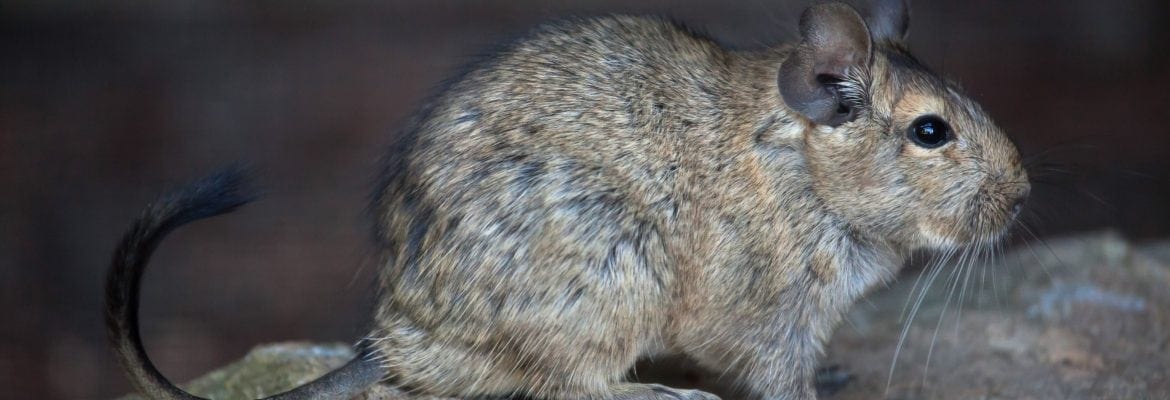
Common degu
Conservation status: IUCN – LC (Least concern)
Geographic range: The southwest part of South America – Chile, the Andes.
Physical description: The common degu is a member of the Octodontid rodent family and is also known as the Chilean squirrel. Their bodies are between 25 cm and 31 cm long and their tails are between 7,5 cm and 13 cm long. They weigh between 170 g and 300 g. The common degu’s fur is yellow-brown with lighter shading on the lower part of their bodies. There is a pale band around their eyes and sometimes around their necks. Their tufted tails can break off if caught by a predator and their very sharp nails allow them to easily climb up various surfaces.
Biology: These animals live in colonies which dig extensive communal burrow systems. Degu is a significant agricultural pests in some areas and they have well-developed sight, smell, and hearing. While defending itself from predators a degu can exuviate a part of its tail, though it is painful and that part of the tail will never grow back. They are highly vocal and use various calls to communicate with one another (about 15 different sounds). Degu is mainly diurnal and therefore make popular pets.
Lifespan: 5-8 years.
Food habits: Degu are generalist herbivores – they feed on leaves, bark, shrub seeds, forbs, and nuts. They store food for the winter.